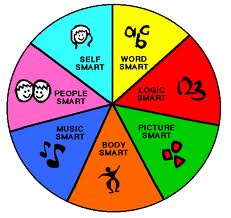Throughout this course, there has been so much valuable information offered. It is clear that there are so many different aspects to learning, and it is hard to decide what is most important. After careful consideration, I have chosen 3 concepts that I think are most important to open learning.
The first concept I have chosen is inclusivity. I believe that inclusivity is fundamental in any kind of learning, and if the general goal of teaching is to have students successfully learn, then having an inclusive design is non-negotiable. Inclusiveness has to do with the idea of providing a range of different tools that the student can select themselves in order to help them learn (Inclusive Learning Design Handbook, n.d.). I think this is one of the most important things when it comes to learning because if a person does not have the right tools to help them learn, then they are less likely to be successful. I firmly believe that everyone should have equal opportunity to learn, regardless of their abilities, environment, or learning style, and inclusivity helps to do that.

The second concept I have chosen is media richness. This has to do with the different aspects that can be added to certain media which increase its ability to communicate with the audience (Bates, 2019). For example, an animation video would increase its richness if it contained audio. Often a resource increases its richness if it has more than one component that communicates knowledge. Bates (2019) uses the example of how a video is richer than radio, and this is because radio relies on a single medium (audio) as opposed to a video which can use multiple. I think this is an important concept because the more resources out there that are rich with information as well as the way they communicate that information, the better the chances are that students will be successful. As well, if a resource uses different mediums then more people will be able to use the resource. So, people who learn with sound can learn from the same video that others use learning with visuals. Linking this back to the previous concept I discussed, it makes the resource more inclusive.
The last concept I have chosen is the space and time dimensions of media. This has to do with when and where learning is facilitated (Bates, 2019). It also largely has to do with the overall flexibility of learning for the students (Bates, 2019). There are four main ideas related to time and space dimensions which are live, recorded, synchronous, and asynchronous, and all of these affect the flexibility of learning. This is really important when it comes to learning because if a course is overly flexible or not flexible enough, it can affect a student’s ability to stay on track, and ultimately learn. Finding the right balance of how much flexibility a course has is fundamental and should be carefully considered.
Two concepts that I would like to spend more time understanding are metadata and sonification. One question I would like to ask is what advances are being made to implement personalized learning more into the school system, and will there ever be a time where standardized testing/learning is exempt from our schools?
Bates, T. (2019). Understanding technology in education. https://via.hypothes.is/https://pressbooks.bccampus.ca/teachinginadi gitalagev2/part/chapter-8-understanding-technology/
Inclusive Learning Design Handbook from OCAD University. https://via.hypothes.is/https://handbook.floeproject.org/